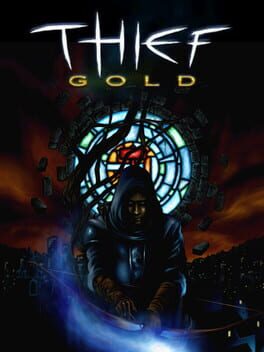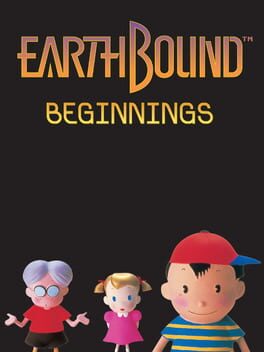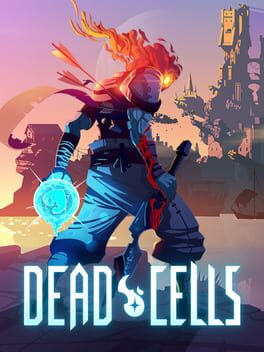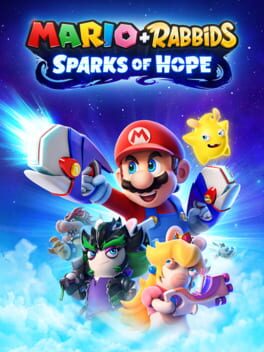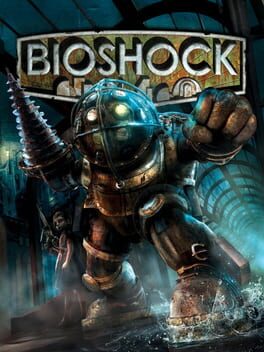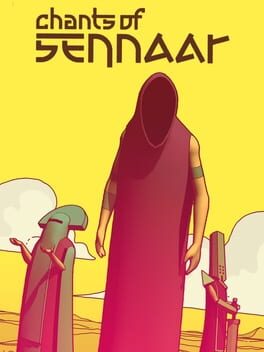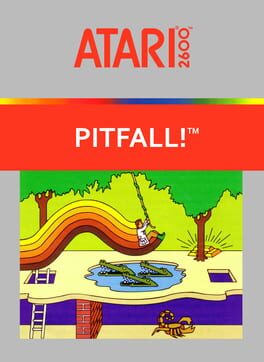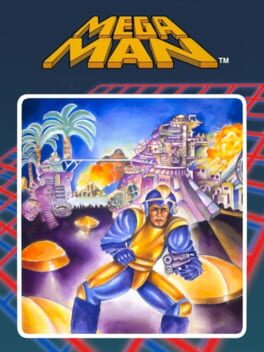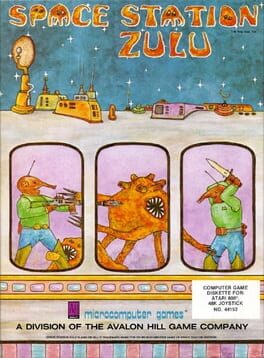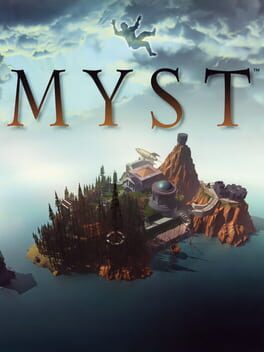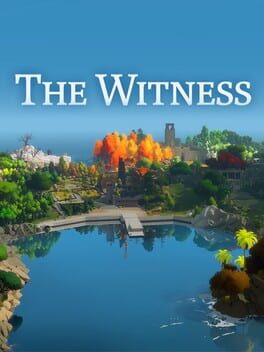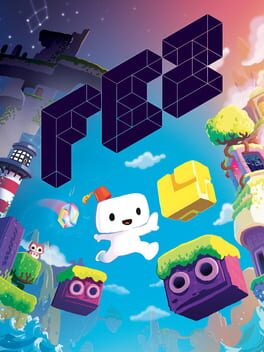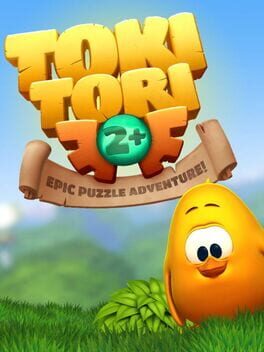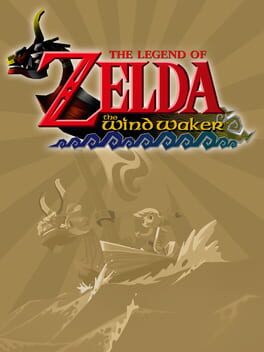Ephemeris
152 reviews liked by Ephemeris
Boogie Wings
1992
Thief Gold
1999
Ever since the Black Parade released to marvelous acclaim hitting Moddb’s mod of the year for 2023. I couldn’t help but ask myself “Is Thief good?” In an effort to see if the game holds up, I decided to start with the first installment before I inevitably reach the mod down the road. And I must say after 28 hours on expert difficulty. Thief Gold(Thief 1/T1) by Looking Glass Studio. Is a dark, thrilling, and fulfilling experience in reigniting all the checkmarks I like and love in the stealth realm. And I am glad to be back in the genre once again. From my days in Metal Gear, Syphon Filter & Old Assassin’s Creed.
Originally called Thief: The Dark Project. The gold edition adds three new missions to deepen the plot and five new enemies. Edited original missions with a slew of bug fixes. So this feels like a definitive edition. Although I did have to use several mods I’ll detail later on to bring the game up to modern standards.
The premise is simple and you control a single character Garret who is a master thief. With no special powers whatsoever. His days from being a homeless orphan were discarded long ago since he joined a secret order. Years later he leaves and decides to make it on his own. Delving into the path of thievery without remorse to fulfill his greed for money. He is ambitious, selfish, cynical, and an untraditional protagonist. All qualities I don’t like at all for a main character and yet by the time the end credits are rolling, I am very tempted to head right into the sequel to see what’s next in store for him.
Worldbuilding is subtle, dark, and strangely yet fittingly humorous at times. A mix of middle ages, dark fantasy, and on the cusp of an industrial revolution. With lore dropping from scrolls and conversations between guards during their breaks. Offering vital gossip on the citizenry, complaints of co-workers, and my personal favorite lore stories and convenient tips/hints that may connect to the main cast. A method to reach a previously unassailable location. Secrets will be revealed unintentionally and a good eavesdropper should without hesitation use it to their advantage to maximum effect. G-man will also monologue amongst himself and will at times drop interesting commentary during work. Usually comments like being dumbfounded or witty responses to abrupt changes in objectives. A nice change of pace from the otherwise silence permeating while you lurk in the shadows. Parchment readings and books offer insightful lessons and teachings from the factions of Hammerites and the Pagans. Both believe in their gods in a way bordering unhealthy zealotry and are at odds with one another. The supernatural elements took me by surprise many times. Spells, incantations, and rituals are fitting. Inducing a mystical wonder beyond the medieval. Zombies, ghosts, and malformed supernatural creatures are here to stay. Oh, and bugs like mutated spiders I didn’t think were a threat had me running away once I caught sight of them. Seriously, how can they jump so high and shoot acid!? Machinery such as factories, smelting tools, and items with a steady supply of lava provide their citizenry with new forms of artificial light instead of the traditional natural fire to illuminate surroundings. Creating an interesting level design throughout, a blend of medieval housing full of conventional bricks, wooden planks, and pavement with the power of adopting steel into the surroundings.
Quite ingenious for a stealth-based gameplay approach back in the old days. Erase approaches such as shooting from afar with guns or tasing anyone to oblivion. The game operates on a mission structure. Before a mission starts you are given a briefing of the events prior, a chance to buy equipment using gold earned from a prior mission, and a handy, but vague map. Embarking on a new place in the City at various times. Always looking forward to a new place to see the sightsand steal whatever I can of course. Sometimes your goals will change during an operation. Good o’l no plan survives contact with the enemy is important to keep in mind. Therefore, caution is advised when conducting skullduggery. But hey Garrett has immensely useful tools to help. No stamina gauge when swinging weapons. Innate ability knocking a bow and arrows. The blackjack is easily the #1 most useful weapon. Capable of one-shotting nearly every enemy into blissful unconsciousness. They never get back up despite hours passing by too! You can move them into shadowed areas preventing patrols from encountering them and thus initiating an alarm at a whole base. Arrows dipped in fire, water, gas, and rope are likewise vital in completing a task. Blasting creatures with fire is like launching a missile capable of damaging multiple enemies. Water aids in dousing torches causing the light in room/s to darken and therefore allowing one mistah G to conduct his activities in better stealth mode than dressing up like an orange ninja from a shinobi world. Gas is powerful. No not fart ones, these kinds if launched correctly can take out groups of enemies into dreamland. Vital when being chased by a horde of angry guards…
Additionally, the rope arrow single-handedly changed my whole experience. Making me think outside the box. Reminds me of using the GLOO gun from Prey and applying the weapon to reach places I wouldn’t otherwise be allowed to exploit regular means. The cable, by comparison, allows one to hit any wooden surface dropping a decent length of string. Becoming instantly available for climbing. As a result, you can traverse higher elevations. Furthermore, one can retrieve their shaft if applicable to re-use once again making the tool highly versatile in nearly any sticky situation he’s subjected to. Trust me you’ll need it when you're at a rock and hard place with nearby zombies closing in on your position with nowhere to run except upon checking your surroundings a wooden beam is above. Maybe a handy tool would surely be useful now.
Level design in every assignment is intricate, maze-like, and deep. Displaying an awesome sleight of hand in the dev’s works to craft initially simple environments then suddenly catching me off-guard by transforming into a large several corridors and passageways leading a lost one into a room full of secrets. It is deep and chock full of hidden areas that can be unlocked from levers, switches, and cleverly tucked away corners. Intrinsically linked in the environment. Delivering a cool verticality and thorough ‘puzzle-like’ solving when applicable. The start of any new venture won’t be the same to some extent in the end portion upon completing all your objectives. You will see sprawling organized streets and then hit unfamiliar ruined suburbs and towns. Dive underwater and emerge in desolate gray caves emerging into a facility of machinery mixed with stone masonry. Similar, but different to how dungeons are made from a certain Zelda series. Full of traps, few floors, and twisting passages that can be confusing to any newcomer unused to the design. One of my favorites is encountering an awesome Pixar-like ‘room’ essentially allowing me to venture inside and somehow escape replicating a [T$%] Story-like design. Someone at Looking Glass has good taste being inspired by the 1995 film huh. And to think this was an optional target I could’ve missed. I. Am. Amazed. Sure the rest of the content isn’t filled to the brim with cool sets like those, but to a degree, they offer a unique hodgepodge of interesting locales to wonder and gawk at least. As a newcomer coming into the series I did not expect at all to admire the sheer size of these levels. Some are more subtle in ways before a certain fire nation attacked delving into the mysticism of earth, wind, and water extending the dev’s creativity to their utmost limit. The elements become more profound and are used intricately as I delve deeper into the endgame. Changing the propensity of manmade structures into natural habitats. Surfaces of the earth and elevating platforms in one section demonstrate the move from traditional simple human paths to complex passageways. Can be confusing at times, but hey remember! You have a handy compass and a map too! So all is not lost. A master thief enjoys establishing their path forward through balanced platforming and embracing the wonders of being lost in the thrill of discovery.
Hell the power to jump provides excellent mobility in areas and the level design pays off in spades demonstrating to great effect. For example, Imagine facing a fort with no possible entryway. Ok well, let me go around to see for any wooden roofs or beams. Voila, there is! Shooting a rope arrow then. I climb and then acrobat onto the rampart. But wait, the door is locked inside! Hmm. The new plan is to head to another rooftop and get inside from there. I climb to the nearest rampart point then give myself a boost and ledge grab my way onto my destination. Successfully entering with no one aware. The ledge grab is super satisfying to enact every time. Although I quickly save before I launch myself just in case I fail. Yet holding the jump button is easy to maneuver and painless to execute.
Almost delving into the point of frustration at times, yet never truly becoming mad to the nth degree I wanted to throw my controller. Perhaps due to the save at anytime system in place making retries quick and painless. It is a relief to operate an easy system to retry failed attempts since most levels are so large. Not an open world at all. Garrett conducts most of his missions at different new locations within the metropolis, which we can explore without a time limit. And there’s always something new to look forward to. I ventured into a manor to steal a scepter. Dived into the pits below to enter hidden caverns and reach a prison facility. Sought treasure in abandoned ruins, boldly stole a precious item between two thieves' guilds, and enacted revenge on a rich dude who tried to assassinate me. Seriously the gall of that guy.
Sound design is brilliant, harsh, intense, and fair. And this is weird. Usually, I praise the heck out of the soundtrack, and while it is good. In Thief I found it more enjoyable to analyze how the gameplay and level design work in tandem with the soundscape. Each step you take and every breath you make is calculated. Go on the steel floor versus carpet and rugs and you can see the clear difference upon nearby patrols. Rugs and carpets muffle your steps while treading on steel produces loud noises capable of making any close enemy's senses go on alert. Any action like swinging your sword, launching an arrow, or even bringing out blackjack to play whack a guard heightens an enemy's awareness. G-dude will exhale after an action and it's gotten to a point where I hold my breath whenever I have a close encounter. Exhaling once the coast is clear. Sights and sounds are interconnected. If you’re in a very dark area, chances are you become neigh invisible compared to a brightly lit room. Staying in the shadows like a sneaky fella pays off. And thankfully, you can stay in a crouched position than a normal pose to conduct your sneaky endeavors. Harsh, but I kid you not I repeatedly felt it was balanced throughout at no point during my time did I feel it was brutally unfair at all times. Rather the usage of noise in this instance facilitates between easy to hard and complex as you dive deeper into the latter stages. As if the devs are saying “Hey, we are increasing the difficulty gradually, no steep cliffs or curveballs.” And I like it. Keeps things fresh and exciting to uncover new hurdles. Supernatural entities like zombies and spirits have this ghastly voice. I found myself with chills crawling up my back. And goodness the regular harmless citizen will shout for help to call attention to your current position. Tension is alive. Stress remains an ever-constant companion when pursued, and patience is needed every day for every hour.
Lastly, I also want to praise the main objectives of missions and AI. The latter for being smart and dumb. Patrols once memorize their route and what their limit is. Abusing their ai becomes rinse and repeat and oh so satisfying. Never waking up after becoming unconscious. Some enemies of different classifications will vary in their sight and danger capability. I.E. Seeing farther and more acutely aware of their surroundings than the usual shmuck of a guard with base intelligence. Think of them as elite guards who have an intruder radar built in updated to version 2.0 than the base version. Hearing better on how loud footsteps are near along with acute 20/20 vision if close in line in sight. This is fascinating and as I progressed deeper into the game, proved once again the devs are challenging me to be better. Goals likewise increase in complexity. You have standard, hard, and expert. Differs from traditional modifiers of upping the enemy's health I usually see in other games. Their parameters increase meaning more tasks to do. A 'normal' setting would indicate one or two retrieve an item and escape. 'Hard' adds a couple more like finding another item in conjunction with the main goal. Expert unleashes a full page of tasks to do. From not killing anyone, finding multiple items, checking with a friend of yours, and attaining a set amount of money all while completing the main quest and escaping to boot. Here are several examples of differences in difficulty. Insane. Furthermore, as I continued with 'expert' on all missions, they largely increased my time in a level due to how large they can be. I usually spent an hour or two depending on the size. Only occurred on max settings. If you try the standard option you can breeze through levels much faster. The addition of higher parameters causes an interesting shift to occur for the player. Thus I had to explore as much as possible, find hidden secrets, embrace the longer plans, being meticulous to survive and not incur any of the killings. The game is much easier killing anyone you come across. But a master thief should never kill. Only retrieve what was ordered and then get out without a fuss.
Time for my mixed feelings. Not a positive or a negative. Just some points from the game I think could be improved, tweaked for the better, and concerns I had. Didn’t affect my overall experience in a major manner.
First, same old, same old textures - Once I saw gray walls, gray bricks, stone pavement, same dirt in more than half of the missions, and frequent density in the latter stages it all became blurred together. Brought up with the maze-like corridors. I felt myself seeing the familiar paths without end. You don’t have a minimap either except a paper map that will vaguely pinpoint where you are. Therefore I had major deja vu. “Haven’t I been here before?” Thankfully, this isn’t egregious and the level variety for what it’s worth elevates everything else. Making it not so noticeable to see constantly. Makes me wonder if the sequel shakes things up a bit with colorful terrain when appropriate. I’m not asking for a rainbow from the color spectrum, merely suggesting slightly distinct patterns.
Second, Some objectives can be a bit vague to find. Like Mission 3. To retrieve the soul of the mystic required me to check everywhere and refer to my papyrus notes for hints and clues. Further, targets or items are not given exact instructions sometimes. Up to you to piece things together. Granted I personally like the non-approach to hand-holding, but some of these goals can be a real head scratcher. If you don’t come across hints and clues, eavesdropping a guard or finding a key to unlock another passageway or door is often the right path forward. Gentle reminder to explore thoroughly. Or use a guide when needed.
Third, May need a tool like a fire, water, or rope arrow to progress. While not required for every assignment. The wire is invaluable and shouldn't be utilized every so often at every opportunity. Elementals to a lesser degree, but still keep them in stock. Most of your inventory is consumables. And while you can find new ammo during a heist, it is best to at least save a decent amount. For situations when you require them. Sucks to use up all of your stock for minor loot grabbed when they may be needed for a critical venture.
Fourth, Wish some missions had health potions available close by. They’re pretty scarce in a job. Some later missions they in my opinion feel needed to help progress rather than me forcing a quicksave and quickload. Saving my health. Enemies can swarm you if you’re not careful and having more health is better than being one-shot. G-guy isn’t some deadliest warrior. So don’t think you can expertly assassinate any bloke. Keep in mind, I played on expert which usually required no bloodshed. Lowering settings offers no restrictions to eliminating anyone.
Fifth, Controls can take some getting used to. I tried keyboard and mouse and found the initial impression cumbersome so I switched to a controller setup and found it far better. Only had to input a couple more keybinds manually and I was fit as a fiddle tosteal! Borrow items. I suggest changing them if you feel weird handling your main character.
Sixth, due to the title being more than two decades old I highly recommend some of these mods I installed to grant an enhanced vanilla experience. Most you can find via a respective PC gaming wiki article. I did use a faithful texture pack. Not the popular one. Feel they change the original textures too much. I’ll leave the choice of what pack to choose up to you. I prefer Enhancement Pack 2.0 alpha.
Mods:
Unofficial patch for Thief 1/Gold - “improves compatibility with new pcs significantly, fixes graphic issues, adds support for widescreen resolutions and much more.”
Texture pack - “Replace all the old, low-quality objects and textures from Thief 1 and 2 with versions that have higher polygon counts and texture resolutions, while keeping as close to the originals as possible.” - This is the hardest mod to install. For some reason, the directions given resulted in half of the textures being improperly replaced. Displaying half high quality and half low quality. Inside you need to edit an ini file to put in the correct mod_path. Here is what I had that finally got everything to work. Hope it works for everyone else. If not, your mileage might vary.
mod_path usermods+mods\packfix+mods\candles+mods\EP\Thief1+NecroAge\Thief1+NecroAge+EP2\Thief1+EP2+mods+mods\t2skies+mods\EP+FMdml
Take a screenshot before the mod is installed and after to see if everything worked out. The rest of the mods I didn't have any trouble inputting.
Subtitles - Self-explanatory. In-game there is no option for subs. With this mod, you can read the spoken dialogue instead of straining your ears.
Sound Enhancement Pack - Makes all sound enhanced and not muddled. Providing clearer audio in both speech and sfx.
60 FPS Video Pack - Original videos are in a low resolution. With the video pack, all the videos are replaced with higher framerate and resolution.
Aside from minor tinkering to get the game up to speed and my barely noticeable mixed feelings. Thief shines when unconventional level design meets strong simple foundations in the gameplay to accentuate and enhance both categories. At its worst players(maybe newbies) may have difficulty in grasping the maze-like paths to reaching their objectives along with vague to almost obscure hints to their solutions(not always, uncommon I think). More so on increasing levels of difficulty than normal I feel. The central narrative I expected to be boring. And in turn I was mentally preparing myself for underwhelming. So to my delight, I was extremely glad to be wrong and found myself beset with a decent narrative and ultimately a likable protagonist.
Finally reaching the end of my trail I found Thief Gold impressed me to a degree I can’t stop thinking constantly about the missions inside. I adore it so much I had to hold off on playing the rest of the series so I won’t get burned out if I continue to run-non-stop at every entry. Filled with lengthy missions depending on difficulty and fair gameplay mechanics to tackle in whatever and however manner you so choose. A freedom in gameplay philosophy I love! And honestly its given me more thought to level design in general and the approach of AI to objectives. I encourage anyone to give it a shot. Especially those who love Stealth or dipping their toes into the genre. For those curious about this old title, it still holds up quite well. Especially if you installed mods to bring it up to modern standards. And hey here’s one tidbit I found fascinating. Turns out Ken Levine worked on Thief along with Warren Spector. These guys would ultimately father some well-known titles down the road. Pretty insightful stuff. I bet we're in for Shocking Examples down the road.
8.5/10
References & Additional Material:
Thief Black Parade Mod
Different Examples of Difficulty
Thief 1 Credits
Mods - Thief PC gaming wiki - Thief 1/Gold Unofficial patch - Sound Enhancement Pack - 60 FPS Video Pack - Texture pack
Subtitles
Edited: 4-3-24 - Small correction on Blackjack use. From human to nearly every enemy. Thanks to @blackcat for the correction! After the small edit. 99% of review still intact.
Originally called Thief: The Dark Project. The gold edition adds three new missions to deepen the plot and five new enemies. Edited original missions with a slew of bug fixes. So this feels like a definitive edition. Although I did have to use several mods I’ll detail later on to bring the game up to modern standards.
The premise is simple and you control a single character Garret who is a master thief. With no special powers whatsoever. His days from being a homeless orphan were discarded long ago since he joined a secret order. Years later he leaves and decides to make it on his own. Delving into the path of thievery without remorse to fulfill his greed for money. He is ambitious, selfish, cynical, and an untraditional protagonist. All qualities I don’t like at all for a main character and yet by the time the end credits are rolling, I am very tempted to head right into the sequel to see what’s next in store for him.
Worldbuilding is subtle, dark, and strangely yet fittingly humorous at times. A mix of middle ages, dark fantasy, and on the cusp of an industrial revolution. With lore dropping from scrolls and conversations between guards during their breaks. Offering vital gossip on the citizenry, complaints of co-workers, and my personal favorite lore stories and convenient tips/hints that may connect to the main cast. A method to reach a previously unassailable location. Secrets will be revealed unintentionally and a good eavesdropper should without hesitation use it to their advantage to maximum effect. G-man will also monologue amongst himself and will at times drop interesting commentary during work. Usually comments like being dumbfounded or witty responses to abrupt changes in objectives. A nice change of pace from the otherwise silence permeating while you lurk in the shadows. Parchment readings and books offer insightful lessons and teachings from the factions of Hammerites and the Pagans. Both believe in their gods in a way bordering unhealthy zealotry and are at odds with one another. The supernatural elements took me by surprise many times. Spells, incantations, and rituals are fitting. Inducing a mystical wonder beyond the medieval. Zombies, ghosts, and malformed supernatural creatures are here to stay. Oh, and bugs like mutated spiders I didn’t think were a threat had me running away once I caught sight of them. Seriously, how can they jump so high and shoot acid!? Machinery such as factories, smelting tools, and items with a steady supply of lava provide their citizenry with new forms of artificial light instead of the traditional natural fire to illuminate surroundings. Creating an interesting level design throughout, a blend of medieval housing full of conventional bricks, wooden planks, and pavement with the power of adopting steel into the surroundings.
Quite ingenious for a stealth-based gameplay approach back in the old days. Erase approaches such as shooting from afar with guns or tasing anyone to oblivion. The game operates on a mission structure. Before a mission starts you are given a briefing of the events prior, a chance to buy equipment using gold earned from a prior mission, and a handy, but vague map. Embarking on a new place in the City at various times. Always looking forward to a new place to see the sights
Additionally, the rope arrow single-handedly changed my whole experience. Making me think outside the box. Reminds me of using the GLOO gun from Prey and applying the weapon to reach places I wouldn’t otherwise be allowed to exploit regular means. The cable, by comparison, allows one to hit any wooden surface dropping a decent length of string. Becoming instantly available for climbing. As a result, you can traverse higher elevations. Furthermore, one can retrieve their shaft if applicable to re-use once again making the tool highly versatile in nearly any sticky situation he’s subjected to. Trust me you’ll need it when you're at a rock and hard place with nearby zombies closing in on your position with nowhere to run except upon checking your surroundings a wooden beam is above. Maybe a handy tool would surely be useful now.
Level design in every assignment is intricate, maze-like, and deep. Displaying an awesome sleight of hand in the dev’s works to craft initially simple environments then suddenly catching me off-guard by transforming into a large several corridors and passageways leading a lost one into a room full of secrets. It is deep and chock full of hidden areas that can be unlocked from levers, switches, and cleverly tucked away corners. Intrinsically linked in the environment. Delivering a cool verticality and thorough ‘puzzle-like’ solving when applicable. The start of any new venture won’t be the same to some extent in the end portion upon completing all your objectives. You will see sprawling organized streets and then hit unfamiliar ruined suburbs and towns. Dive underwater and emerge in desolate gray caves emerging into a facility of machinery mixed with stone masonry. Similar, but different to how dungeons are made from a certain Zelda series. Full of traps, few floors, and twisting passages that can be confusing to any newcomer unused to the design. One of my favorites is encountering an awesome Pixar-like ‘room’ essentially allowing me to venture inside and somehow escape replicating a [T$%] Story-like design. Someone at Looking Glass has good taste being inspired by the 1995 film huh. And to think this was an optional target I could’ve missed. I. Am. Amazed. Sure the rest of the content isn’t filled to the brim with cool sets like those, but to a degree, they offer a unique hodgepodge of interesting locales to wonder and gawk at least. As a newcomer coming into the series I did not expect at all to admire the sheer size of these levels. Some are more subtle in ways before a certain fire nation attacked delving into the mysticism of earth, wind, and water extending the dev’s creativity to their utmost limit. The elements become more profound and are used intricately as I delve deeper into the endgame. Changing the propensity of manmade structures into natural habitats. Surfaces of the earth and elevating platforms in one section demonstrate the move from traditional simple human paths to complex passageways. Can be confusing at times, but hey remember! You have a handy compass and a map too! So all is not lost. A master thief enjoys establishing their path forward through balanced platforming and embracing the wonders of being lost in the thrill of discovery.
Hell the power to jump provides excellent mobility in areas and the level design pays off in spades demonstrating to great effect. For example, Imagine facing a fort with no possible entryway. Ok well, let me go around to see for any wooden roofs or beams. Voila, there is! Shooting a rope arrow then. I climb and then acrobat onto the rampart. But wait, the door is locked inside! Hmm. The new plan is to head to another rooftop and get inside from there. I climb to the nearest rampart point then give myself a boost and ledge grab my way onto my destination. Successfully entering with no one aware. The ledge grab is super satisfying to enact every time. Although I quickly save before I launch myself just in case I fail. Yet holding the jump button is easy to maneuver and painless to execute.
Almost delving into the point of frustration at times, yet never truly becoming mad to the nth degree I wanted to throw my controller. Perhaps due to the save at anytime system in place making retries quick and painless. It is a relief to operate an easy system to retry failed attempts since most levels are so large. Not an open world at all. Garrett conducts most of his missions at different new locations within the metropolis, which we can explore without a time limit. And there’s always something new to look forward to. I ventured into a manor to steal a scepter. Dived into the pits below to enter hidden caverns and reach a prison facility. Sought treasure in abandoned ruins, boldly stole a precious item between two thieves' guilds, and enacted revenge on a rich dude who tried to assassinate me. Seriously the gall of that guy.
Sound design is brilliant, harsh, intense, and fair. And this is weird. Usually, I praise the heck out of the soundtrack, and while it is good. In Thief I found it more enjoyable to analyze how the gameplay and level design work in tandem with the soundscape. Each step you take and every breath you make is calculated. Go on the steel floor versus carpet and rugs and you can see the clear difference upon nearby patrols. Rugs and carpets muffle your steps while treading on steel produces loud noises capable of making any close enemy's senses go on alert. Any action like swinging your sword, launching an arrow, or even bringing out blackjack to play whack a guard heightens an enemy's awareness. G-dude will exhale after an action and it's gotten to a point where I hold my breath whenever I have a close encounter. Exhaling once the coast is clear. Sights and sounds are interconnected. If you’re in a very dark area, chances are you become neigh invisible compared to a brightly lit room. Staying in the shadows like a sneaky fella pays off. And thankfully, you can stay in a crouched position than a normal pose to conduct your sneaky endeavors. Harsh, but I kid you not I repeatedly felt it was balanced throughout at no point during my time did I feel it was brutally unfair at all times. Rather the usage of noise in this instance facilitates between easy to hard and complex as you dive deeper into the latter stages. As if the devs are saying “Hey, we are increasing the difficulty gradually, no steep cliffs or curveballs.” And I like it. Keeps things fresh and exciting to uncover new hurdles. Supernatural entities like zombies and spirits have this ghastly voice. I found myself with chills crawling up my back. And goodness the regular harmless citizen will shout for help to call attention to your current position. Tension is alive. Stress remains an ever-constant companion when pursued, and patience is needed every day for every hour.
Lastly, I also want to praise the main objectives of missions and AI. The latter for being smart and dumb. Patrols once memorize their route and what their limit is. Abusing their ai becomes rinse and repeat and oh so satisfying. Never waking up after becoming unconscious. Some enemies of different classifications will vary in their sight and danger capability. I.E. Seeing farther and more acutely aware of their surroundings than the usual shmuck of a guard with base intelligence. Think of them as elite guards who have an intruder radar built in updated to version 2.0 than the base version. Hearing better on how loud footsteps are near along with acute 20/20 vision if close in line in sight. This is fascinating and as I progressed deeper into the game, proved once again the devs are challenging me to be better. Goals likewise increase in complexity. You have standard, hard, and expert. Differs from traditional modifiers of upping the enemy's health I usually see in other games. Their parameters increase meaning more tasks to do. A 'normal' setting would indicate one or two retrieve an item and escape. 'Hard' adds a couple more like finding another item in conjunction with the main goal. Expert unleashes a full page of tasks to do. From not killing anyone, finding multiple items, checking with a friend of yours, and attaining a set amount of money all while completing the main quest and escaping to boot. Here are several examples of differences in difficulty. Insane. Furthermore, as I continued with 'expert' on all missions, they largely increased my time in a level due to how large they can be. I usually spent an hour or two depending on the size. Only occurred on max settings. If you try the standard option you can breeze through levels much faster. The addition of higher parameters causes an interesting shift to occur for the player. Thus I had to explore as much as possible, find hidden secrets, embrace the longer plans, being meticulous to survive and not incur any of the killings. The game is much easier killing anyone you come across. But a master thief should never kill. Only retrieve what was ordered and then get out without a fuss.
Time for my mixed feelings. Not a positive or a negative. Just some points from the game I think could be improved, tweaked for the better, and concerns I had. Didn’t affect my overall experience in a major manner.
First, same old, same old textures - Once I saw gray walls, gray bricks, stone pavement, same dirt in more than half of the missions, and frequent density in the latter stages it all became blurred together. Brought up with the maze-like corridors. I felt myself seeing the familiar paths without end. You don’t have a minimap either except a paper map that will vaguely pinpoint where you are. Therefore I had major deja vu. “Haven’t I been here before?” Thankfully, this isn’t egregious and the level variety for what it’s worth elevates everything else. Making it not so noticeable to see constantly. Makes me wonder if the sequel shakes things up a bit with colorful terrain when appropriate. I’m not asking for a rainbow from the color spectrum, merely suggesting slightly distinct patterns.
Second, Some objectives can be a bit vague to find. Like Mission 3. To retrieve the soul of the mystic required me to check everywhere and refer to my papyrus notes for hints and clues. Further, targets or items are not given exact instructions sometimes. Up to you to piece things together. Granted I personally like the non-approach to hand-holding, but some of these goals can be a real head scratcher. If you don’t come across hints and clues, eavesdropping a guard or finding a key to unlock another passageway or door is often the right path forward. Gentle reminder to explore thoroughly. Or use a guide when needed.
Third, May need a tool like a fire, water, or rope arrow to progress. While not required for every assignment. The wire is invaluable and shouldn't be utilized every so often at every opportunity. Elementals to a lesser degree, but still keep them in stock. Most of your inventory is consumables. And while you can find new ammo during a heist, it is best to at least save a decent amount. For situations when you require them. Sucks to use up all of your stock for minor loot grabbed when they may be needed for a critical venture.
Fourth, Wish some missions had health potions available close by. They’re pretty scarce in a job. Some later missions they in my opinion feel needed to help progress rather than me forcing a quicksave and quickload. Saving my health. Enemies can swarm you if you’re not careful and having more health is better than being one-shot. G-guy isn’t some deadliest warrior. So don’t think you can expertly assassinate any bloke. Keep in mind, I played on expert which usually required no bloodshed. Lowering settings offers no restrictions to eliminating anyone.
Fifth, Controls can take some getting used to. I tried keyboard and mouse and found the initial impression cumbersome so I switched to a controller setup and found it far better. Only had to input a couple more keybinds manually and I was fit as a fiddle to
Sixth, due to the title being more than two decades old I highly recommend some of these mods I installed to grant an enhanced vanilla experience. Most you can find via a respective PC gaming wiki article. I did use a faithful texture pack. Not the popular one. Feel they change the original textures too much. I’ll leave the choice of what pack to choose up to you. I prefer Enhancement Pack 2.0 alpha.
Mods:
Unofficial patch for Thief 1/Gold - “improves compatibility with new pcs significantly, fixes graphic issues, adds support for widescreen resolutions and much more.”
Texture pack - “Replace all the old, low-quality objects and textures from Thief 1 and 2 with versions that have higher polygon counts and texture resolutions, while keeping as close to the originals as possible.” - This is the hardest mod to install. For some reason, the directions given resulted in half of the textures being improperly replaced. Displaying half high quality and half low quality. Inside you need to edit an ini file to put in the correct mod_path. Here is what I had that finally got everything to work. Hope it works for everyone else. If not, your mileage might vary.
mod_path usermods+mods\packfix+mods\candles+mods\EP\Thief1+NecroAge\Thief1+NecroAge+EP2\Thief1+EP2+mods+mods\t2skies+mods\EP+FMdml
Take a screenshot before the mod is installed and after to see if everything worked out. The rest of the mods I didn't have any trouble inputting.
Subtitles - Self-explanatory. In-game there is no option for subs. With this mod, you can read the spoken dialogue instead of straining your ears.
Sound Enhancement Pack - Makes all sound enhanced and not muddled. Providing clearer audio in both speech and sfx.
60 FPS Video Pack - Original videos are in a low resolution. With the video pack, all the videos are replaced with higher framerate and resolution.
Aside from minor tinkering to get the game up to speed and my barely noticeable mixed feelings. Thief shines when unconventional level design meets strong simple foundations in the gameplay to accentuate and enhance both categories. At its worst players(maybe newbies) may have difficulty in grasping the maze-like paths to reaching their objectives along with vague to almost obscure hints to their solutions(not always, uncommon I think). More so on increasing levels of difficulty than normal I feel. The central narrative I expected to be boring. And in turn I was mentally preparing myself for underwhelming. So to my delight, I was extremely glad to be wrong and found myself beset with a decent narrative and ultimately a likable protagonist.
Finally reaching the end of my trail I found Thief Gold impressed me to a degree I can’t stop thinking constantly about the missions inside. I adore it so much I had to hold off on playing the rest of the series so I won’t get burned out if I continue to run-non-stop at every entry. Filled with lengthy missions depending on difficulty and fair gameplay mechanics to tackle in whatever and however manner you so choose. A freedom in gameplay philosophy I love! And honestly its given me more thought to level design in general and the approach of AI to objectives. I encourage anyone to give it a shot. Especially those who love Stealth or dipping their toes into the genre. For those curious about this old title, it still holds up quite well. Especially if you installed mods to bring it up to modern standards. And hey here’s one tidbit I found fascinating. Turns out Ken Levine worked on Thief along with Warren Spector. These guys would ultimately father some well-known titles down the road. Pretty insightful stuff. I bet we're in for Shocking Examples down the road.
8.5/10
References & Additional Material:
Thief Black Parade Mod
Different Examples of Difficulty
Thief 1 Credits
Mods - Thief PC gaming wiki - Thief 1/Gold Unofficial patch - Sound Enhancement Pack - 60 FPS Video Pack - Texture pack
Subtitles
Edited: 4-3-24 - Small correction on Blackjack use. From human to nearly every enemy. Thanks to @blackcat for the correction! After the small edit. 99% of review still intact.
I shouldn’t like this game. It’s a grindfest, there’s no rolling HP meter, and the dungeons are unnecessarily gigantic. It’s so archaic nobody in their right mind will play the official release all the way through. Hell, I put it down for a while before completion.
You know what though? Sometimes rough edges are part of the appeal. Even with the grinding, I found Mother to be a snappy and enjoyable experience. What takes one hour in this game takes two in the sequels and four in most other JRPGs. The rich music transcends the hardware limitations, delivering feelings ranging from whimsical adventure to creeping horror. This is a case where the 8-bit presentation enhances the experience. Exploring towns full of tiny, yet wacky character sprites, battling psychotic normalities against a black void, and getting lost in mazes of gray would have hit much less hard if there wasn’t so much open to interpretation.
Mother is a masterful use of crude graphics, empty space, and tonal shifts to turn the player into a kid wandering the unknown. I strongly disagree with the notion it’s not worth playing. EarthBound and Mother 3 are undoubtedly better balanced games and worth experiencing in their own right, but just like remodeling a 30-year old house, there was as much lost as there was gained during the transition.
You know what though? Sometimes rough edges are part of the appeal. Even with the grinding, I found Mother to be a snappy and enjoyable experience. What takes one hour in this game takes two in the sequels and four in most other JRPGs. The rich music transcends the hardware limitations, delivering feelings ranging from whimsical adventure to creeping horror. This is a case where the 8-bit presentation enhances the experience. Exploring towns full of tiny, yet wacky character sprites, battling psychotic normalities against a black void, and getting lost in mazes of gray would have hit much less hard if there wasn’t so much open to interpretation.
Mother is a masterful use of crude graphics, empty space, and tonal shifts to turn the player into a kid wandering the unknown. I strongly disagree with the notion it’s not worth playing. EarthBound and Mother 3 are undoubtedly better balanced games and worth experiencing in their own right, but just like remodeling a 30-year old house, there was as much lost as there was gained during the transition.
Dead Cells
2017
Alien Soldier
1995
If there’s one game that sums up the old saying, “don’t judge a book by its cover,” it’s Mario + Rabbids: Kingdom Battle. Against all odds, this raving union successfully breathed new life into both franchises while also innovating on the turn-based strategy gameplay characterized by the XCOM franchise. The greater emphasis on movement and streamlining hit accuracies to 0%, 50%, and 100% opened the strategy floodgates for both the player and enemies during battles. This dynamism cemented it as one of the best early Switch titles.
Following up that success was a no-brainer, but Ubisoft could no longer hide behind the novelty of the concept. As fun as Kingdom Battle was, it featured some baffling design choices in hindsight, like limited team customization options and a pointless coin economy. To elaborate on the latter, coins were used to buy increasingly powerful versions of existing weapons to fight stronger opponents. This arms race didn’t make for deeper gameplay so much as offer that pleasureful sensation of seeing the numbers go up. Textbook example of a tacked-on RPG system. Additionally, new enemies stopped being introduced in the last world, which made for a plodding finale.
The sequel, Sparks of Hope, fixes most of these issues. You can now pick any three characters you want for a battle and the coins have been repurposed for buying optional battle items. Enemy variety has also been improved, but it’s unfortunately spread thin throughout the lengthy campaign, especially if you go for 100% completion like I did. The AI should have also been a lot better. Even on the highest difficulty, enemies never take advantage of environmental hazards like Bob-ombs, exploding barrels, and gusts of wind. These could have made for some tense battles of cat and mouse, but instead hazards can only be exploited by the player. Sometimes I could formulate a winning strategy just by looking at the map.
The lower difficulty wasn’t a big issue for me though, and that’s because Sparks of Hope makes subtle gameplay refinements that pack a huge punch once you sink your teeth into them. When I saw the trailers, I was confused on what exactly was different about the combat. Kingdom Battle’s grid-based system being replaced with analog movement didn’t appear to change the fundamentals since it was obvious that tiles were still being used to calculate character movement. They were just invisible now. What was the point of being able to freely move around? Then I started playing, and everything gradually made sense. Let me explain.
One of the ways Kingdom Battle emphasized mobility on the battlefield was dashing. How it worked was if an enemy was within a character’s movement range, they could dash into the enemy for extra damage. However, due to limited controller options, Kingdom Battle forced the use of an analog stick for selecting specific tiles on the grid via cursor. Every PC player knows how imprecise this feels compared to a mouse. Unless you moved the cursor really slowly, it was easy to accidentally select a tile next to a dashable enemy, meaning your character would move there instead of dashing first and waste an attack opportunity. A confirmation prompt would’ve alleviated this, but I suspect Ubisoft thought having to click through the same textbox three times per turn would have been absurd. On that, I wholeheartedly agree. The sequel’s analog movement system improves on this because it allows you to position yourself before you dash into enemies, letting you execute actions quickly while ensuring any mistakes made are your fault. It’s a more natural fit for a home console game.
Another unique movement ability was the team jump, allowing one of your units to jump off a teammate to reach a part of the arena they otherwise couldn’t. Sparks of Hope builds on this by allowing you to move a set distance after jumping, indicated by a range circle. You can pull off some sick jump combos with this newfound freedom if you line up your teammates correctly. The 3D World jump panels in some levels are particularly fun to exploit since they don’t count towards a character’s team jump, letting you use as many of them as possible during a turn. This may sound broken, but the maps tend to be larger than those from Kingdom Battle, so I think it all checks out.
The increased freedom of movement is rounded out with the addition of Sparks, Rabbids that have fused with Lumas from Super Mario Galaxy. These can provide passive abilities like an elemental buff for exploiting enemy weaknesses or something powerful like turning invisible, preventing enemies from targeting the user. Each character can carry two Sparks, meaning you can bring six of them into most encounters. They definitely contribute to fights being easier compared to Kingdom Battle, but I had such a blast trying out different character and Spark combinations that I really don’t mind. It’s also important to note Ubisoft limited characters to performing two actions per turn. An action consists of using a character’s weapon, technique, Spark, or a battle item. This means using a Spark locks you out of being able to use that character’s weapon and technique in the same turn. Sparks and techniques also operate on cooldowns and using a character’s weapon locks them in place for the remainder of the turn, so there are trade-offs to consider during the tougher skirmishes.
The freedom even extends beyond the battles. All of the hub worlds are open zones (open world is too misleading a term imo) allowing you to tackle battles and complete side quests in almost any order you see fit. The light puzzle-solving from Kingdom Battle returns, serving as a nice breather after the normal battles. Beep-O also obtains a handful of abilities that open previously inaccessible sections of a map. Unlike the best Metroidvanias, however, this forced backtracking doesn’t enhance the experience. The abilities you need to fully complete a zone are always found on the next one and there’s so little content you’re unable to access the first time that I don’t see why Ubisoft couldn’t go the full mile and make everything accessible in one visit.
Overall, Sparks of Hope feels more confident with its gameplay foundation, but Kingdom Battle is still worth playing for its higher difficulty and deviant Mushroom Kingdom setting. The playerbase seems split on which one they like more. I’m currently swinging towards the sequel, but not by much. Both are quality titles and well worth your attention.
Following up that success was a no-brainer, but Ubisoft could no longer hide behind the novelty of the concept. As fun as Kingdom Battle was, it featured some baffling design choices in hindsight, like limited team customization options and a pointless coin economy. To elaborate on the latter, coins were used to buy increasingly powerful versions of existing weapons to fight stronger opponents. This arms race didn’t make for deeper gameplay so much as offer that pleasureful sensation of seeing the numbers go up. Textbook example of a tacked-on RPG system. Additionally, new enemies stopped being introduced in the last world, which made for a plodding finale.
The sequel, Sparks of Hope, fixes most of these issues. You can now pick any three characters you want for a battle and the coins have been repurposed for buying optional battle items. Enemy variety has also been improved, but it’s unfortunately spread thin throughout the lengthy campaign, especially if you go for 100% completion like I did. The AI should have also been a lot better. Even on the highest difficulty, enemies never take advantage of environmental hazards like Bob-ombs, exploding barrels, and gusts of wind. These could have made for some tense battles of cat and mouse, but instead hazards can only be exploited by the player. Sometimes I could formulate a winning strategy just by looking at the map.
The lower difficulty wasn’t a big issue for me though, and that’s because Sparks of Hope makes subtle gameplay refinements that pack a huge punch once you sink your teeth into them. When I saw the trailers, I was confused on what exactly was different about the combat. Kingdom Battle’s grid-based system being replaced with analog movement didn’t appear to change the fundamentals since it was obvious that tiles were still being used to calculate character movement. They were just invisible now. What was the point of being able to freely move around? Then I started playing, and everything gradually made sense. Let me explain.
One of the ways Kingdom Battle emphasized mobility on the battlefield was dashing. How it worked was if an enemy was within a character’s movement range, they could dash into the enemy for extra damage. However, due to limited controller options, Kingdom Battle forced the use of an analog stick for selecting specific tiles on the grid via cursor. Every PC player knows how imprecise this feels compared to a mouse. Unless you moved the cursor really slowly, it was easy to accidentally select a tile next to a dashable enemy, meaning your character would move there instead of dashing first and waste an attack opportunity. A confirmation prompt would’ve alleviated this, but I suspect Ubisoft thought having to click through the same textbox three times per turn would have been absurd. On that, I wholeheartedly agree. The sequel’s analog movement system improves on this because it allows you to position yourself before you dash into enemies, letting you execute actions quickly while ensuring any mistakes made are your fault. It’s a more natural fit for a home console game.
Another unique movement ability was the team jump, allowing one of your units to jump off a teammate to reach a part of the arena they otherwise couldn’t. Sparks of Hope builds on this by allowing you to move a set distance after jumping, indicated by a range circle. You can pull off some sick jump combos with this newfound freedom if you line up your teammates correctly. The 3D World jump panels in some levels are particularly fun to exploit since they don’t count towards a character’s team jump, letting you use as many of them as possible during a turn. This may sound broken, but the maps tend to be larger than those from Kingdom Battle, so I think it all checks out.
The increased freedom of movement is rounded out with the addition of Sparks, Rabbids that have fused with Lumas from Super Mario Galaxy. These can provide passive abilities like an elemental buff for exploiting enemy weaknesses or something powerful like turning invisible, preventing enemies from targeting the user. Each character can carry two Sparks, meaning you can bring six of them into most encounters. They definitely contribute to fights being easier compared to Kingdom Battle, but I had such a blast trying out different character and Spark combinations that I really don’t mind. It’s also important to note Ubisoft limited characters to performing two actions per turn. An action consists of using a character’s weapon, technique, Spark, or a battle item. This means using a Spark locks you out of being able to use that character’s weapon and technique in the same turn. Sparks and techniques also operate on cooldowns and using a character’s weapon locks them in place for the remainder of the turn, so there are trade-offs to consider during the tougher skirmishes.
The freedom even extends beyond the battles. All of the hub worlds are open zones (open world is too misleading a term imo) allowing you to tackle battles and complete side quests in almost any order you see fit. The light puzzle-solving from Kingdom Battle returns, serving as a nice breather after the normal battles. Beep-O also obtains a handful of abilities that open previously inaccessible sections of a map. Unlike the best Metroidvanias, however, this forced backtracking doesn’t enhance the experience. The abilities you need to fully complete a zone are always found on the next one and there’s so little content you’re unable to access the first time that I don’t see why Ubisoft couldn’t go the full mile and make everything accessible in one visit.
Overall, Sparks of Hope feels more confident with its gameplay foundation, but Kingdom Battle is still worth playing for its higher difficulty and deviant Mushroom Kingdom setting. The playerbase seems split on which one they like more. I’m currently swinging towards the sequel, but not by much. Both are quality titles and well worth your attention.
BioShock
2007
The Beginner's Guide
2015
The Last Guardian
2016
There seems to be a prevalent expectation that as games evolved, they also became exponentially more approachable. Higher budgets resulted in smoother graphics and fewer bugs. More complex controls (adding left/right triggers, then adding one/two joysticks, then dabbling with motion inputs, etc) gave players a firmer grasp over their characters. AI became more predictable as their algorithms became more intricate to capture a wider range of responses. In a sense, as the technology expanded, the resulting products seemingly became more streamlined to better suit the player’s needs while more thoroughly capturing a developer’s vision.
Team Ico has never been about following tradition, however. If anything, the evolution of their titles embodies the regression of player control, choosing to instead utilize technological advancements not just to refine its premise via "design by subtraction" as chump has pointed out, but to deliver an entirely new experience altogether. Ico was a classic tale of boy meets girl; the girl had to be freed from her cage and pulled around the castle, as the boy protected her against everything in her way to prevent her demise. Shadow of the Colossus, however, was a story concerned with the struggle over control. The lone wanderer, in his quest to revive Mono, hunts down various several-story colossi capable of swatting him about like a fly. In the resulting desperate dance of death, he at first struggles to climb their hulking figures, hanging on for dear life until he discovers their weak points and stabs the colossi while they helplessly flail about. In other words, it's a game about trying to regain any semblance of control until you realize after the fact that the only shadow left was the literal shadow cast by Wander over their fallen corpse.
The Last Guardian then, can be thought of as the natural evolution of Team Ico titles, in that it melds previous design sensibilities and thrives off of disempowering the player throughout its entirety. Trico, the player’s companion and a cross between cat and bird, is essentially the analog to Wander’s horse in Shadow of the Colossus, Agro. Fumito Ueda designed Agro as a companion rather than just a vehicle, and had his team develop specific movement algorithms that would allow Agro to steer herself without the player’s explicit control, forcing players to put their trust in their steed during certain fights emphasizing bow aiming. Ueda and his new team at GenDesign iterated upon this idea, explicitly creating environments where the player was forced to rely upon Trico’s actions to progress and thus establish dependency between the boy and his companion.
While the game can be thought of as an inversion of Ico in this sense, its design influence upon The Last Guardian should not go overlooked, particularly in how the game captures Ico’s physicality. Ico’s key strength was establishing a sense of presence through minimalist puzzles that lacked overly gamey elements, namely in how Ico interacted with his surroundings. Players are subtly guided into climbing chains, pulling levers, sitting on stone sofas to save, and most importantly, holding down R1 to hold Yorda by the hand around the castle and pull her out of danger whenever captured. The Last Guardian innovates upon this by combining several of the traversable elements and the companion into one. To better navigate the vast ruins, the boy must guide Trico and utilize their tall body of climbable feathers in order to scale heights, while occasionally dragging around their large tail and dangling it over ledges to safely climb down. Most importantly, you get to pet Trico whenever you feel like it to comfort your friend in both their happiest and most emotionally taxing moments. In both Ico and The Last Guardian, the player’s constant contact with both the environment and their companion keeps them firmly rooted within its constructed sense of reality by regularly reminding them of their companion’s physical presence.
This physicality would not be as significant without the lessons learned from Shadow of the Colossus however, not just regarding AI behavior but also specifically in how it adapts the game’s sense of scale. Trico is large, and the boy is small. As mentioned previously, Trico can utilize their size to lean against walls and give the boy a step up, but they can also utilize their weight to hold down large chains and swipe away at imposing bodies of armor. Meanwhile, the boy is much more agile and can fit into otherwise inaccessible small spaces by Trico, squeezing through narrow tunnels and gaps in metal gates to pull switches and let his partner through. This obvious difference in size creates consistent room for contrast, not just in how the two characters differ in terms of functionality but also in terms of their scale when measured against the traversed liminal spaces of the ruins, constantly transforming from immense empty rooms to constrained and suffocating tunnels and corridors.
What is particularly interesting is not just The Last Guardian’s disempowerment or sense of scale, but rather what it manages to achieve with said elements and the resulting contrast to establish interdependency between the two characters and solidify their relationship. The combat, an almost complete inverse of Ico’s combat, is the most obvious example. Rather than defending Yorda by whacking shadow enemies with a stick, the roles have been reversed, in that the player must rely upon Trico to guard against scores of possessed armor as to avoid getting kidnapped himself. Even so, the game plays around with this idea of vulnerability, shifting the onus of responsibility about as the boy often finds himself in positions where he must actively support or protect Trico, such as disposing of glass eyes that scare his friend or scrambling to pull a nearby switch to lower a bridge and give Trico room to climb up to safety. The game is even willing to occasionally break its own rules to demonstrate how this sense of caring evolves past its defined guidelines. In almost any other game, this mechanical inconsistency would be regarded as a flaw, but it is this sense of doubt that creates room for the relationship to build from in the first place, and is perhaps the game’s most understated strength.
This is not to say that The Last Guardian was bereft of limitations regarding the execution of its ambitious scope. The most pressing challenge that Ueda and his team faced was how to balance its constructed sense of reality with regards to player expectations; that is, it had to find meaningful ways to commit to its vision of establishing the relationship between the boy and Trico while also acknowledging and appeasing players that would otherwise get lost or frustrated. Perhaps the most obvious downgrade from Ico is the presence of constant button prompts appearing on-screen to alert the players on how to better control the boy and instruct Trico; while the frequency of the prompts lessens over time, it is a slight disappointment that the game doesn’t simply force the players to experiment with inputs and commands as a more subtle and trusting substitute. This downfall however, is an anomaly amongst The Last Guardian’s other shortcomings, as it manages to successfully disguise many of its other concessions and limitations. There’s a classic “escape from the collapsing structure” sequence where all you do is hold forward and jump, but the game gets away with it because the player is used to being framed as a helpless participant. There’s occasional voice-over dialogue hints whenever the player has been stuck for a while in the same area, but it feels far less intrusive than Dormin’s repeated and booming hints in Shadow of the Colossus because the game has already established itself as a retrospective re-telling from the now grown boy’s point of view. Trico doesn’t respond immediately to the boy’s commands when being told where to go, but it makes sense that they wouldn’t function like clockwork and would need time to spot and process the situation from their own point of view, so the lag in response feels justified. It doesn’t matter that certain isolated elements of the game would crumble under scrutiny. What matters is that the situational context to allow players to suspend their disbelief is almost always present; in other words, the illusion holds up.
I’m still learning more about the game to this day. There are so many little details that I wouldn’t have spotted upon a first playthrough, and it’s an absolute joy finally getting to gush upon spotting them in replays. Of course it makes sense that you can’t just issue specific commands to Trico at the very start as a sequence-break despite not being taught by the game; after all, Trico hasn’t had time to observe you and mimic your actions to carry out such commands. Of course the hostile creatures that look exactly like your friend behave similarly; how can you then use your preconceived knowledge of their physiology to aid your friend in a fight against their copycat? I also can’t help but appreciate how GenDesign condensed so much learning within its introduction; in the first ten minutes alone, you’re hinted on how to later deal with the bodies of armor (the magical runes that appear before waking up are the exact same as the runes that appear when grabbed, and are dispelled in the same manner of furiously mashing buttons), you get to figure out how Trico’s eyes change colors depending upon whether they’re mesmerized or hostile, and it quickly establishes the premise of building up trust with a very wary creature that’s more than likely to misunderstand or ignore you at first. Combine all of these nuances with the game’s ability to destabilize and diversify playthroughs via Trico’s innate curiosity and semi-unpredictable instincts, and you get a game that becomes easier to appreciate the more the player familiarizes themselves with its inner workings.
I think a lot of criticism for The Last Guardian ultimately comes down to less of what we perceive the game is and more of what we perceive the game isn’t. It’s not a fully player-controlled puzzle-platforming game like Ico, it’s not a puzzle-combat game with spectacle like Shadow of the Colossus, and it’s certainly not a classic companion escort-quest game where you can just order Trico around like a robot and expect automatic results every time. Instead of focusing on the progression of more complex controls and puzzles, The Last Guardian is focused on the progression of a seemingly more complex relationship. I’m not going to pretend that everyone will get something out of this game, as it definitely requires a good deal of patience and player investment to meet the game halfway. It’s certainly more difficult to appreciate given its lack of influence unlike Ico or its lack of exhilarating boss encounters unlike Shadow of the Colossus. That said, it’s this element of danger in its ability to commit to its vision while alienating impatient players that makes it such a compelling title once it finally clicks. Many before me have pointed out how powerful the bond between the player and Trico felt upon learning from others that improperly caring for Trico results in your companion stubbornly ignoring the player’s commands; after all, volume swells cannot exist without contrast to provide room for growth. Perhaps this is why at the end of the day, I find myself transfixed by every word that Fumito Ueda has to offer. In an era where developers feel overly concerned with the best and brightest, he doesn’t seem concerned about what video games mean so much as what video games are. I can only hope that someday, he and GenDesign will return to bring us a new title that captures our imagination as thoroughly as many of his works already have for me.
Team Ico has never been about following tradition, however. If anything, the evolution of their titles embodies the regression of player control, choosing to instead utilize technological advancements not just to refine its premise via "design by subtraction" as chump has pointed out, but to deliver an entirely new experience altogether. Ico was a classic tale of boy meets girl; the girl had to be freed from her cage and pulled around the castle, as the boy protected her against everything in her way to prevent her demise. Shadow of the Colossus, however, was a story concerned with the struggle over control. The lone wanderer, in his quest to revive Mono, hunts down various several-story colossi capable of swatting him about like a fly. In the resulting desperate dance of death, he at first struggles to climb their hulking figures, hanging on for dear life until he discovers their weak points and stabs the colossi while they helplessly flail about. In other words, it's a game about trying to regain any semblance of control until you realize after the fact that the only shadow left was the literal shadow cast by Wander over their fallen corpse.
The Last Guardian then, can be thought of as the natural evolution of Team Ico titles, in that it melds previous design sensibilities and thrives off of disempowering the player throughout its entirety. Trico, the player’s companion and a cross between cat and bird, is essentially the analog to Wander’s horse in Shadow of the Colossus, Agro. Fumito Ueda designed Agro as a companion rather than just a vehicle, and had his team develop specific movement algorithms that would allow Agro to steer herself without the player’s explicit control, forcing players to put their trust in their steed during certain fights emphasizing bow aiming. Ueda and his new team at GenDesign iterated upon this idea, explicitly creating environments where the player was forced to rely upon Trico’s actions to progress and thus establish dependency between the boy and his companion.
While the game can be thought of as an inversion of Ico in this sense, its design influence upon The Last Guardian should not go overlooked, particularly in how the game captures Ico’s physicality. Ico’s key strength was establishing a sense of presence through minimalist puzzles that lacked overly gamey elements, namely in how Ico interacted with his surroundings. Players are subtly guided into climbing chains, pulling levers, sitting on stone sofas to save, and most importantly, holding down R1 to hold Yorda by the hand around the castle and pull her out of danger whenever captured. The Last Guardian innovates upon this by combining several of the traversable elements and the companion into one. To better navigate the vast ruins, the boy must guide Trico and utilize their tall body of climbable feathers in order to scale heights, while occasionally dragging around their large tail and dangling it over ledges to safely climb down. Most importantly, you get to pet Trico whenever you feel like it to comfort your friend in both their happiest and most emotionally taxing moments. In both Ico and The Last Guardian, the player’s constant contact with both the environment and their companion keeps them firmly rooted within its constructed sense of reality by regularly reminding them of their companion’s physical presence.
This physicality would not be as significant without the lessons learned from Shadow of the Colossus however, not just regarding AI behavior but also specifically in how it adapts the game’s sense of scale. Trico is large, and the boy is small. As mentioned previously, Trico can utilize their size to lean against walls and give the boy a step up, but they can also utilize their weight to hold down large chains and swipe away at imposing bodies of armor. Meanwhile, the boy is much more agile and can fit into otherwise inaccessible small spaces by Trico, squeezing through narrow tunnels and gaps in metal gates to pull switches and let his partner through. This obvious difference in size creates consistent room for contrast, not just in how the two characters differ in terms of functionality but also in terms of their scale when measured against the traversed liminal spaces of the ruins, constantly transforming from immense empty rooms to constrained and suffocating tunnels and corridors.
What is particularly interesting is not just The Last Guardian’s disempowerment or sense of scale, but rather what it manages to achieve with said elements and the resulting contrast to establish interdependency between the two characters and solidify their relationship. The combat, an almost complete inverse of Ico’s combat, is the most obvious example. Rather than defending Yorda by whacking shadow enemies with a stick, the roles have been reversed, in that the player must rely upon Trico to guard against scores of possessed armor as to avoid getting kidnapped himself. Even so, the game plays around with this idea of vulnerability, shifting the onus of responsibility about as the boy often finds himself in positions where he must actively support or protect Trico, such as disposing of glass eyes that scare his friend or scrambling to pull a nearby switch to lower a bridge and give Trico room to climb up to safety. The game is even willing to occasionally break its own rules to demonstrate how this sense of caring evolves past its defined guidelines. In almost any other game, this mechanical inconsistency would be regarded as a flaw, but it is this sense of doubt that creates room for the relationship to build from in the first place, and is perhaps the game’s most understated strength.
This is not to say that The Last Guardian was bereft of limitations regarding the execution of its ambitious scope. The most pressing challenge that Ueda and his team faced was how to balance its constructed sense of reality with regards to player expectations; that is, it had to find meaningful ways to commit to its vision of establishing the relationship between the boy and Trico while also acknowledging and appeasing players that would otherwise get lost or frustrated. Perhaps the most obvious downgrade from Ico is the presence of constant button prompts appearing on-screen to alert the players on how to better control the boy and instruct Trico; while the frequency of the prompts lessens over time, it is a slight disappointment that the game doesn’t simply force the players to experiment with inputs and commands as a more subtle and trusting substitute. This downfall however, is an anomaly amongst The Last Guardian’s other shortcomings, as it manages to successfully disguise many of its other concessions and limitations. There’s a classic “escape from the collapsing structure” sequence where all you do is hold forward and jump, but the game gets away with it because the player is used to being framed as a helpless participant. There’s occasional voice-over dialogue hints whenever the player has been stuck for a while in the same area, but it feels far less intrusive than Dormin’s repeated and booming hints in Shadow of the Colossus because the game has already established itself as a retrospective re-telling from the now grown boy’s point of view. Trico doesn’t respond immediately to the boy’s commands when being told where to go, but it makes sense that they wouldn’t function like clockwork and would need time to spot and process the situation from their own point of view, so the lag in response feels justified. It doesn’t matter that certain isolated elements of the game would crumble under scrutiny. What matters is that the situational context to allow players to suspend their disbelief is almost always present; in other words, the illusion holds up.
I’m still learning more about the game to this day. There are so many little details that I wouldn’t have spotted upon a first playthrough, and it’s an absolute joy finally getting to gush upon spotting them in replays. Of course it makes sense that you can’t just issue specific commands to Trico at the very start as a sequence-break despite not being taught by the game; after all, Trico hasn’t had time to observe you and mimic your actions to carry out such commands. Of course the hostile creatures that look exactly like your friend behave similarly; how can you then use your preconceived knowledge of their physiology to aid your friend in a fight against their copycat? I also can’t help but appreciate how GenDesign condensed so much learning within its introduction; in the first ten minutes alone, you’re hinted on how to later deal with the bodies of armor (the magical runes that appear before waking up are the exact same as the runes that appear when grabbed, and are dispelled in the same manner of furiously mashing buttons), you get to figure out how Trico’s eyes change colors depending upon whether they’re mesmerized or hostile, and it quickly establishes the premise of building up trust with a very wary creature that’s more than likely to misunderstand or ignore you at first. Combine all of these nuances with the game’s ability to destabilize and diversify playthroughs via Trico’s innate curiosity and semi-unpredictable instincts, and you get a game that becomes easier to appreciate the more the player familiarizes themselves with its inner workings.
I think a lot of criticism for The Last Guardian ultimately comes down to less of what we perceive the game is and more of what we perceive the game isn’t. It’s not a fully player-controlled puzzle-platforming game like Ico, it’s not a puzzle-combat game with spectacle like Shadow of the Colossus, and it’s certainly not a classic companion escort-quest game where you can just order Trico around like a robot and expect automatic results every time. Instead of focusing on the progression of more complex controls and puzzles, The Last Guardian is focused on the progression of a seemingly more complex relationship. I’m not going to pretend that everyone will get something out of this game, as it definitely requires a good deal of patience and player investment to meet the game halfway. It’s certainly more difficult to appreciate given its lack of influence unlike Ico or its lack of exhilarating boss encounters unlike Shadow of the Colossus. That said, it’s this element of danger in its ability to commit to its vision while alienating impatient players that makes it such a compelling title once it finally clicks. Many before me have pointed out how powerful the bond between the player and Trico felt upon learning from others that improperly caring for Trico results in your companion stubbornly ignoring the player’s commands; after all, volume swells cannot exist without contrast to provide room for growth. Perhaps this is why at the end of the day, I find myself transfixed by every word that Fumito Ueda has to offer. In an era where developers feel overly concerned with the best and brightest, he doesn’t seem concerned about what video games mean so much as what video games are. I can only hope that someday, he and GenDesign will return to bring us a new title that captures our imagination as thoroughly as many of his works already have for me.
Chants of Sennaar
2023
fantastic game! i always love stories that have to do with fictional ancient languages and cultures, and as someone who has a pretty big interest in linguistics this was so up my alley, it's actually crazy. i went into this knowing next to nothing since the premise was enough to get me to buy it lol, this is a rare one where i didn't watch 30 minutes of a stream vod beforehand. that's usually how i find new games to play
really enjoyed the act of learning the languages, it was so fun to decipher and i loved noticing the patterns in the symbols and the differences between each language! loved that they were not all structured the same, like they had unique grammar and vocabulary specific to their culture and it made me so happy to see, the attention to detail and the thought put into the scripts is incredible
i'm sad that this is kind of one of those games that aren't quite replayable, but i've replayed obra dinn several times and enjoyed myself so i don't think it will be too hard lol. i played on switch so i don't have any access to achievements, but after looking at a full list i see there were some secrets i happened to miss, so that's reason enough to play again!
my only negative thoughts about this game are on the stealth sections. i generally dislike stealth in games and there were some instances here that i struggled to see where i was even supposed to go, which just made the stealth even more stressful than usual. most stealth made narrative sense, but sometimes it just felt a bit too forced for my taste (particularly the areas where you are "dead" the INSTANT you're spotted). thankfully there isn't much of a penalty to speak of when you get caught, so it wasn't as bad as it could've been, but it was still easily my least favorite part of an otherwise great game
really enjoyed the act of learning the languages, it was so fun to decipher and i loved noticing the patterns in the symbols and the differences between each language! loved that they were not all structured the same, like they had unique grammar and vocabulary specific to their culture and it made me so happy to see, the attention to detail and the thought put into the scripts is incredible
i'm sad that this is kind of one of those games that aren't quite replayable, but i've replayed obra dinn several times and enjoyed myself so i don't think it will be too hard lol. i played on switch so i don't have any access to achievements, but after looking at a full list i see there were some secrets i happened to miss, so that's reason enough to play again!
my only negative thoughts about this game are on the stealth sections. i generally dislike stealth in games and there were some instances here that i struggled to see where i was even supposed to go, which just made the stealth even more stressful than usual. most stealth made narrative sense, but sometimes it just felt a bit too forced for my taste (particularly the areas where you are "dead" the INSTANT you're spotted). thankfully there isn't much of a penalty to speak of when you get caught, so it wasn't as bad as it could've been, but it was still easily my least favorite part of an otherwise great game

